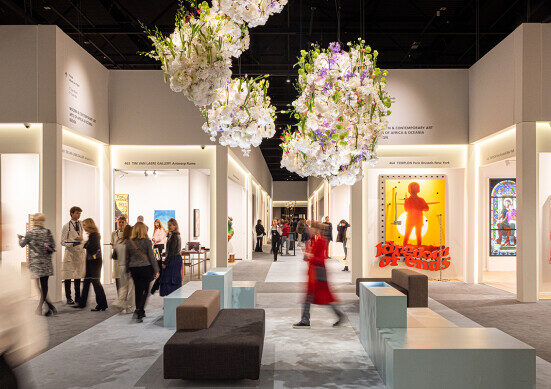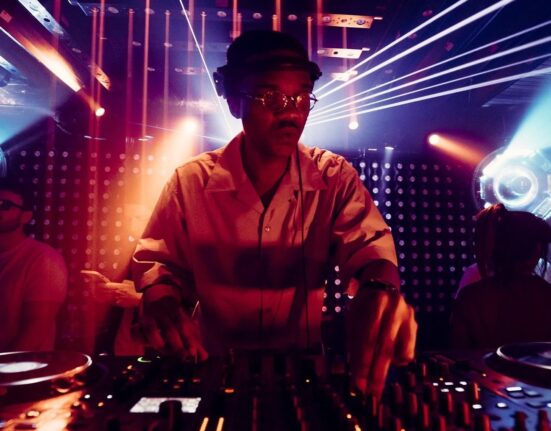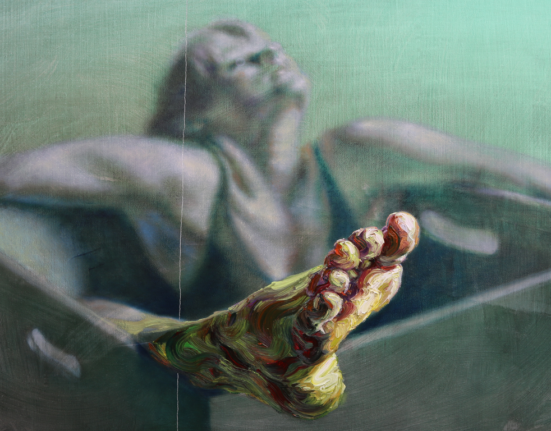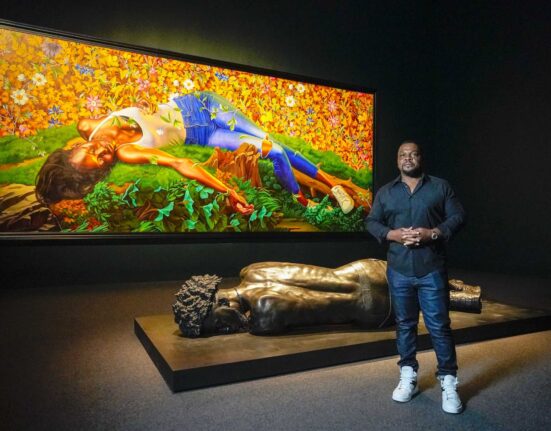Flagstaff artist Shonto Begay was in high school, and running with friends through the Navajo Tribal Fair in Tuba City, when something stopped him in his tracks.
“It was a windy night, it was kind of dusty and it was nighttime at the Navajo Tribal Fair in Tuba City. The great Western Navajo Fair. I was running with my buddies, and I passed one of the booths,” Begay said. “And then there was Baje behind a little table, small watercolors all over. It stopped me.”
This watercolor painting by Navajo artist Baje Whitethorne Sr. was one of many featured in his retrospective exhibit at the Museum of Northern Arizona in 2022.
Baje Whitethorne Sr. instructs Khalid Honie during a workshop in this 2019 file photo.
Mentoring youth
Students Khalid Honie and Orinda Goddard watch as Baje Whitethorne Sr. paints on a canvas as part of MNA’s new Namingha Institute artist residency in this 2019 file photo.
‘Shades of Baje’
Navajo artist Baje Whitethorne Sr. works on one of his paintings.







